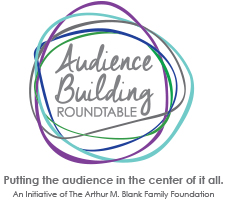by Brad Pilcher
Much of the discussion around how to build audiences for the arts focuses on data-driven decision-making. Figure out who your audience is. Target them carefully, and maximize the value of every marketing dollar.
All of this requires data, very specific data, and a great deal of it.
Data, however, can be scary. It involves numbers, and math, and sometimes (gasp) formulas. For many of us who’ve chosen the arts non-profit world, these are not things we’re entirely comfortable with.
But here’s the thing about data-driven decision-making: It puts the emphasis on the data, rather than the decision-making process.
That’s not surprising. Most people make decisions on a daily basis, and they’re fairly comfortable with doing so.
Thus the most common questions people ask have nothing to do with the process of making decisions, and everything to do with how to get and use data:
- “We don’t have any data about our audience. What data do we even need?”
- “Where should we put all this data?”
- “What are we supposed to do with it once we have it?”
What are these questions really asking? If you think of data-driven decision-making as a process, then you can see all of these questions as fundamentally about one thing:
How do we start this process, and where does data fit into it?
That is a great question, because it puts the emphasis back on the process. Instead of fixating on the intimidating data, you can focus on your situation. More specifically, you can focus on your audience, and how you want to connect with them.
Instead of thinking of data as some big, amorphous, complicated, scientific thing, you can see it for what it is, just fuel for your audience-building engine.
Instead of starting with the data, start with your audience and your current relationship with them:
- What problems do you have with your audience? Too few? Too many? Too many of one kind, and not enough of another?
- What questions do you need to answer, in order to find solutions?
- What information do you already have, and what information are you missing?
Then you can answer the question: “What data do we need?”
The answer: “Whatever you’re missing that will get you to answers that will get you to your solution.”
“What are we supposed to do with that data once we have it?”
Answer: “Use it to answer those specific questions that will offer you a solution.”
And if you’re still intimidated by the big, scary, complicated data, perhaps it will help to know that data can be broken down into a few types. What’s more, each of those types of data corresponds (more or less) with specific types of organizational activities. They also map onto certain aspects of your relationship to audiences, both your existing one and that untapped potential audience you dream of.
If you know this, you can pretty easily map these types of data onto your circumstances.
So what are these types of data, and how are they useful? Not to leave on a cliffhanger, but that is a subject for Part II. Watch for Part II in mid-September!
Keywords: Super Macro Data, Macro Data, Micro Data, NEA Reports, ESRI database, zipcode targeting, CRM, targeted emails
